Related Research Articles

The Drake Passage is the body of water between South America's Cape Horn, Chile, Argentina and the South Shetland Islands of Antarctica. It connects the southwestern part of the Atlantic Ocean with the southeastern part of the Pacific Ocean and extends into the Southern Ocean. The passage is named after the 16th-century English explorer and privateer Sir Francis Drake.
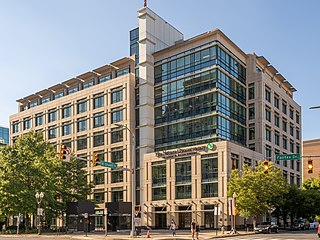
The Nature Conservancy (TNC) is a global environmental organization headquartered in Arlington, Virginia. As of 2021, it works via affiliates or branches in 79 countries and territories, as well as across every state in the US.

Jule Gregory Charney was an American meteorologist who played an important role in developing numerical weather prediction and increasing understanding of the general circulation of the atmosphere by devising a series of increasingly sophisticated mathematical models of the atmosphere. His work was the driving force behind many national and international weather initiatives and programs.

John Alexander Church is an expert on sea level and its changes. He was co-convening lead author for the chapter on Sea Level in the IPCC Third Assessment Report. He was also a co-convening lead author for the IPCC Fifth Assessment Report. He is a member of the Joint Scientific Committee of the WCRP. He was a project leader at CSIRO, until 2016. He is currently a professor with the University of New South Wales' Climate Change Research Centre.
Parameterization in a weather or climate model is a method of replacing processes that are too small-scale or complex to be physically represented in the model by a simplified process. This can be contrasted with other processes—e.g., large-scale flow of the atmosphere—that are explicitly resolved within the models. Associated with these parameterizations are various parameters used in the simplified processes. Examples include the descent rate of raindrops, convective clouds, simplifications of the atmospheric radiative transfer on the basis of atmospheric radiative transfer codes, and cloud microphysics. Radiative parameterizations are important to both atmospheric and oceanic modeling alike. Atmospheric emissions from different sources within individual grid boxes also need to be parameterized to determine their impact on air quality.

NatureServe, Inc. is a non-profit organization based in Arlington County, Virginia, US, that provides proprietary wildlife conservation-related data, tools, and services to private and government clients, partner organizations, and the public. NatureServe reports being "headquartered in Arlington, Virginia, with regional offices in four U.S. locations and in Canada." In calendar year 2011 they reported having 86 employees, 6 volunteers, and 15 independent officers.

The Atlantic meridional overturning circulation (AMOC) is part of a global thermohaline circulation in the oceans and is the zonally integrated component of surface and deep currents in the Atlantic Ocean. It is characterized by a northward flow of warm, salty water in the upper layers of the Atlantic, and a southward flow of colder, deep waters. These "limbs" are linked by regions of overturning in the Nordic and Labrador Seas and the Southern Ocean, although the extent of overturning in the Labrador Sea is disputed. The AMOC is an important component of the Earth's climate system, and is a result of both atmospheric and thermohaline drivers.
The World Ocean Circulation Experiment (WOCE) was a component of the international World Climate Research Program, and aimed to establish the role of the World Ocean in the Earth's climate system. WOCE's field phase ran between 1990 and 1998, and was followed by an analysis and modeling phase that ran until 2002. When the WOCE was conceived, there were three main motivations for its creation. The first of these is the inadequate coverage of the World Ocean, specifically in the Southern Hemisphere. Data was also much more sparse during the winter months than the summer months, and there was—and still to some extent—a critical need for data covering all seasons. Secondly, the data that did exist was not initially collected for studying ocean circulation and was not well suited for model comparison. Lastly, there were concerns involving the accuracy and reliability of some measurements. The WOCE was meant to address these problems by providing new data collected in ways designed to "meet the needs of global circulation models for climate prediction."
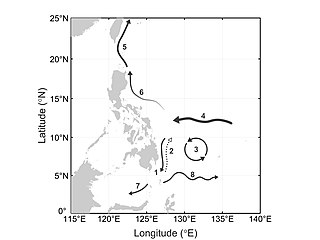
The Mindanao Current (MC) is a southward current in the western Pacific Ocean that transports mass and freshwater between ocean basins. It is a low-latitude western boundary current that follows the eastern coast of the Philippine island group and its namesake, Mindanao. The MC forms from the North Equatorial Current (NEC) that flows from east to west between 10-20°N. As it travels west, the NEC reaches its western limit: the coast of the Philippines. Once it encounters shallower waters near land, it “splits” into two branches: one moves northward and becomes the Kuroshio current and one moves southward and becomes the Mindanao Current. The process of splitting is called a bifurcation.
In fluid dynamics, and oceanography, Langmuir turbulence is a turbulent flow with coherent Langmuir circulation structures that exist and evolve over a range of spatial and temporal scales. These structures arise through an interaction between the ocean surface waves and the currents.
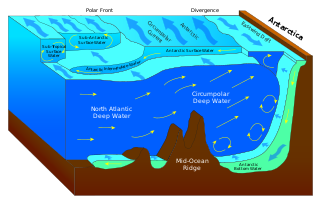
Mode water is defined as a particular type of water mass, which is nearly vertically homogeneous. Its vertical homogeneity is caused by the deep vertical convection in winter. The first term to describe this phenomenon is 18° water, which was used by Valentine Worthington to describe the isothermal layer in the northern Sargasso Sea cool to a temperature of about 18 °C each winter. Then Masuzawa introduced the subtropical mode water concept to describe the thick layer of temperature 16–18 °C in the northwestern North Pacific subtropical gyre, on the southern side of the Kuroshio Extension. The terminology mode water was extended to the thick near-surface layer north of the Subantarctic Front by McCartney, who identified and mapped the properties of the Subantarctic mode water (SAMW). After that, McCartney and Talley then applied the term subpolar mode water (SPMW) to the thick near-surface mixed layers in the North Atlantic’s subpolar gyre.
Steve McCormick is the former president of The Gordon and Betty Moore Foundation (2007-2014) and the former president and CEO of The Nature Conservancy (2000-2007). In May 2014, Gordon Moore announced that McCormick was leaving the Moore Foundation to co-found a startup to create the first global, open-source database on ecosystem services and natural capital, called The Earth Genome. McCormick is a board member for many social impact and environmental organizations.
The Science for Nature and People Partnership (SNAPP) is an initiative that aims to rapidly develop models that will underpin the next phase of nature conservation and sustainable development. It works with public, voluntary and private sector organizations around the world to transform the relationship between people and nature.
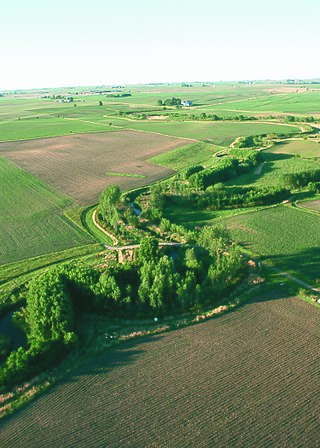
Nature-based solutions (NBS) is the sustainable management and use of natural features and processes to tackle socio-environmental issues. These issues include climate change, water security, water pollution, food security, human health, biodiversity loss, and disaster risk management. The European Commission's definition of NBS states that these solutions are "inspired and supported by nature, which are cost-effective, simultaneously provide environmental, social and economic benefits and help build resilience. Such solutions bring more, and more diverse, nature and natural features and processes into cities, landscapes, and seascapes, through locally adapted, resource-efficient and systemic interventions". In 2020, the EC definition was updated to further emphasise that “Nature-based solutions must benefit biodiversity and support the delivery of a range of ecosystem services.” Through the use of NBS healthy, resilient, and diverse ecosystems can provide solutions for the benefit of both societies and overall biodiversity.
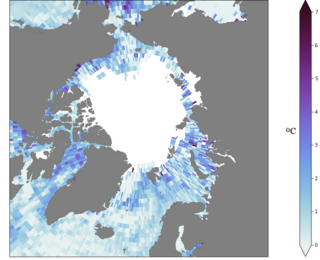
Atlantification is the increasing influence of Atlantic water in the Arctic. Warmer and saltier Atlantic water is extending its reach northward into the Arctic Ocean. The Arctic Ocean is becoming warmer and saltier and sea-ice is disappearing as a result. The process can be seen on the figure on the far right, where the sea surface temperature change in the past 50 years is shown, which is up to 5 degrees in some places. This change in the Arctic climate is most prominent in the Barents Sea, a shallow shelf sea north of Scandinavia, where sea-ice is disappearing faster than in any other Arctic region, impacting the local and global ecosystem.
Sarah Gille is a physical oceanographer at Scripps Institution of Oceanography known for her research on the role of the Southern Ocean in the global climate system.
Mary-Louise Elizabeth Timmermans is a marine scientist known for her work on the Arctic Ocean. She is the Damon Wells Professor of Earth and Planetary Sciences at Yale University.
Lisa M. Beal is a professor at the University of Miami known for her work on the Agulhas Current. She is the editor-in-chief of the Journal of Geophysical Research: Oceans.

Cold and dense water from the Nordic Seas is transported southwards as Faroe-Bank Channel overflow. This water flows from the Arctic Ocean into the North Atlantic through the Faroe-Bank Channel between the Faroe Islands and Scotland. The overflow transport is estimated to contribute to one-third of the total overflow over the Greenland-Scotland Ridge. The remaining two-third of overflow water passes through Denmark Strait, the Wyville Thomson Ridge (0.3 Sv), and the Iceland-Faroe Ridge (1.1 Sv).
References
- ↑ "Giulio Boccaletti | Penguin Random House". PenguinRandomhouse.com. Retrieved 2021-01-22.
- ↑ "Dr Giulio Boccaletti | People | Smith School of Enterprise and the Environment | University of Oxford". www.smithschool.ox.ac.uk. Retrieved 2021-07-03.
- ↑ "Nature Conservancy's executive team". The Nature Conservancy . Retrieved January 6, 2016.
- ↑ "Global Agenda Council on water". World Economic Forum . Retrieved January 6, 2016.
- ↑ "OECD Global Water Partnership" (PDF). OECD . Archived from the original (PDF) on March 3, 2016. Retrieved January 6, 2016.
- ↑ "Governance". CMCC (in Italian). Retrieved 2021-01-22.
- ↑ Water Security Editorial Board.
- ↑ "IPCC authors' page" (PDF). Retrieved January 13, 2016.
- ↑ "Edge Giulio Boccaletti member bio" . Retrieved January 13, 2016.
- ↑ "H2O: The Molecule That Made Us Episode 1: Civilizations". Molecule That Made Us. Retrieved 2021-07-03.
- ↑ "Water by Giulio Boccaletti: 9781524748234 | PenguinRandomHouse.com: Books". PenguinRandomhouse.com. Retrieved 2021-01-22.
- ↑ "Giulio Boccaletti TNC bio" . Retrieved January 13, 2016.
- ↑ "The Renewable Energy Source That's About to Boom Again". Time . Retrieved January 13, 2016.
- ↑ "The Power of Rivers" (PDF). Retrieved January 13, 2016.
- ↑ "Water Funds: Investing in Nature and Clean Water". The Nature Conservancy . Retrieved February 24, 2016.
- ↑ "Water Funds:Investing in Nature and Clean Water". The Nature Conservancy . Retrieved January 13, 2016.
- ↑ Charles Daly (August 17, 2015). "With Water Crisis Here, Funds Part of Solution, Boccaletti Says". Bloomberg News. Retrieved January 13, 2016.
- ↑ Eddy Njoroge and Giulio Boccaletti (June 3, 2015). "How we can make nature work for us". Standard Media, Kenya. Retrieved January 13, 2016.
- ↑ Giulio Boccaletti (December 4, 2014). "Making Water Conservation Pay". Project Syndicate. Retrieved January 13, 2016.
- ↑ Megan Darby (July 31, 2015). "As climate change bites, Kenya water fund offers hope to farmers". Climate Change News. Retrieved January 13, 2016.
- ↑ Giulio Boccaletti, The Nature Conservancy (October 23, 2015). "Not all types of water projects should be considered green". Environmental Finance. Retrieved January 13, 2016.
- ↑ "How the UN's latest initiative could end the water crisis in 15 years". Thomson Reuters Foundation. July 23, 2015. Retrieved January 13, 2016.
- ↑ "Dr Giulio Boccaletti". European Commission. May 7, 2011. Retrieved January 19, 2016.
- ↑ "Dr Giulio Boccaletti". McKinsey. Retrieved January 19, 2016.
- ↑ "Climate Change and Water Supply". C-Span (GB begins speaking at 27:15). November 23, 2009. Retrieved January 13, 2016.
- ↑ "Giulio Boccaletti". Edge.org. Retrieved January 13, 2016.
- ↑ "A sound "much like a baroque flute"". Princeton. December 14, 1998. Retrieved January 13, 2016.
- ↑ "Budrio Ocarina Group - Italy (A.Vivaldi Concerto per flauto archi e basso continuo F. VI n°8)". YouTube. May 22, 2009. Retrieved January 13, 2016.
- ↑ "WEF Young Global Leaders Class of 2014" . Retrieved January 6, 2016.
- ↑ "WHOI 2000 Program in Geophysical Fluid Dynamics" . Retrieved January 6, 2016.
- ↑ "Edge Foundation" . Retrieved January 6, 2016.
- ↑ "goodreads.com" . Retrieved January 6, 2016.
- ↑ "Harper Collins" . Retrieved January 6, 2016.
- ↑ Suhendini, Mentari. "academia.edu" . Retrieved February 22, 2016.
{{cite journal}}: Cite journal requires|journal=(help) - ↑ "mckinsey.com" . Retrieved February 22, 2016.
- ↑ "mckinsey.com" . Retrieved February 22, 2016.
- ↑ "mckinsey.com" . Retrieved February 22, 2016.
- ↑ "kyotoclub.org.com" (PDF). Retrieved February 22, 2016.
- ↑ "smart2020.org" (PDF). Archived from the original (PDF) on July 28, 2011. Retrieved February 22, 2016.
- ↑ "mckinsey.com" . Retrieved February 22, 2016.